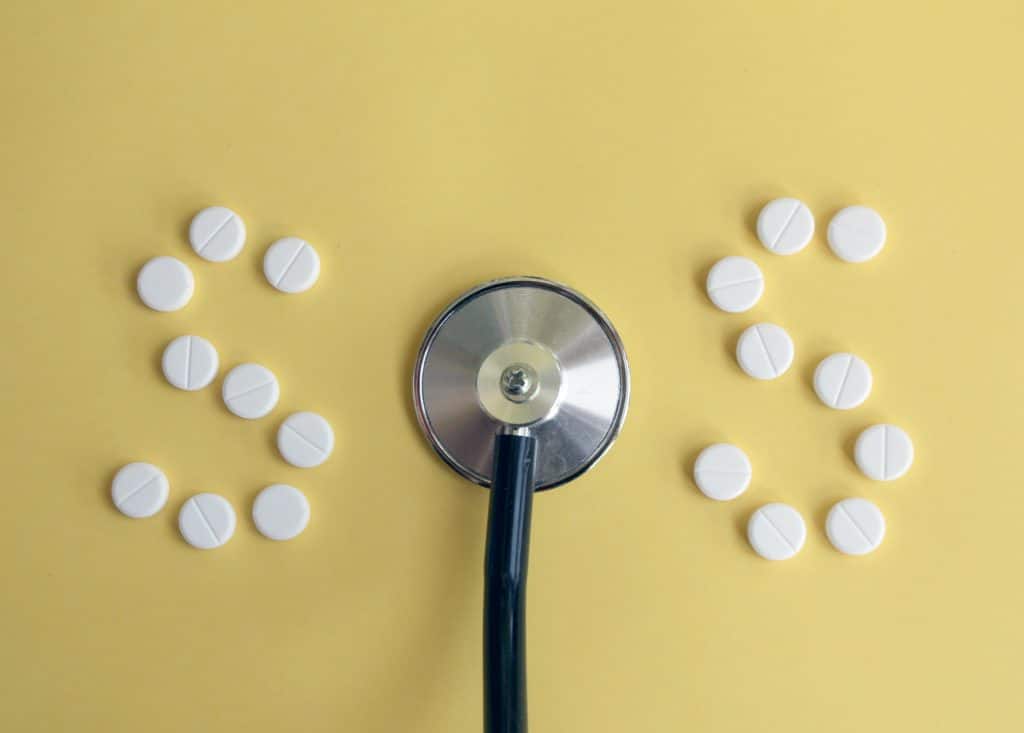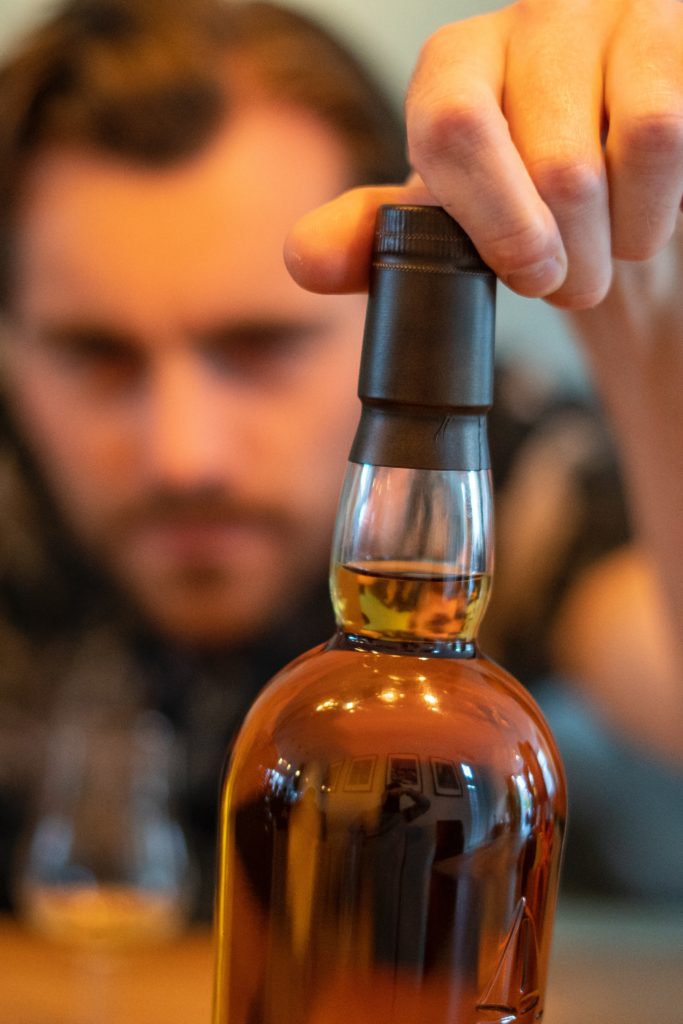Naltrexone is a form of medication-assisted treatment that is often used to help reduce cravings and aid in someone’s recovery from addiction. Combining Naltrexone and alcohol can present certain issues, and experts claim that the use of Naltrexone ought to be used in tandem with abstinence. Learn more about this unique medication and how it can help aid you in your recovery below.
What is Naltrexone?
The opioid antagonist Naltrexone (brand names: ReVia, Vivitrol, and Depade) is a medication that is FDA-approved to treat those who suffer from alcohol use disorders and opioid use disorders. The drug comes in a pill form (Depade and the more popular version ReVia) and as an extended-release injectable form (Vivitrol). Naltrexone is designed to reduce and suppress cravings for alcohol or opiate drugs. It does this by binding to the opioid receptors in the person’s brain (thereby removing any opiate drugs on these receptors) and suppressing cravings.
Naltrexone is considered to have no abuse potential and does not result in the development of physical dependence. An individual must obtain a prescription in order to legally obtain it, and the medication is typically used in situations where individuals are actively recovering from alcohol use disorders or opiate abuse.
Naltrexone does not treat withdrawal symptoms; rather, it is designed to suppress cravings for alcohol or opiate drugs. Individuals with moderate to severe alcohol use disorders who are using naltrexone may experience withdrawal symptoms if they stop drinking that can be potentially fatal due to the development of seizures. These individuals should consult with an addiction medicine physician or psychiatrist before discontinuing their use of alcohol.

Side Effects of Naltrexone
Naltrexone is considered safe to use and associated with few side effects; however, all medications have a side effect profile. Side effects as a result of naltrexone use are reported to be relatively rare, but they do occur in some instances. Some include:
- Individuals should not use opiate drugs while taking naltrexone. People who use opiate drugs and take naltrexone may experience opioid withdrawal symptoms as naltrexone is an opioid antagonist. The Food and Drug Administration (FDA) recommends that individuals who use naltrexone should be abstinent from opioid drugs for a week to 10 days. Because naltrexone is an opioid antagonist, people using it and who also use opioid medications for their psychoactive effects will not experience the typical “high” that they get from opiate drugs. This may result in individuals taking more opiate drugs than they normally would and potentially overdosing on opiates.
- Nausea, stomach cramps, and diarrhea are the most common reported side effects; however, these typically resolve over time.
- Some individuals may experience muscle stiffness, cramps, and headaches.
- Sleep disruptions (including both insomnia and hypersomnia), anxiety, and dizziness have also been reported.
- Pregnant women should not use naltrexone.
Taking Naltrexone and Alcohol
There appear to be no significant dangers associated with taking naltrexone and alcohol. Information provided by the FDA and by the National Institute on Alcohol Abuse and Alcoholism (NIAAA) reports that individuals who drink alcohol and use naltrexone:
- Will still experience the functional impairments that are associated with alcohol use, such as a loss of motor coordination, decreased response time, problems with slowed rates of thinking, etc.
- May experience less of an urge to drink more alcohol.
- May reduce their alcohol intake.
Thus, research supports the notion that naltrexone is effective in reducing alcohol intake but not effective in promoting abstinence from alcohol. Individuals in these studies often continued to take naltrexone and alcohol, and there were no significant or dangerous effects noted. One method of treating alcohol use disorders known as the Sinclair Method suggests that individuals take naltrexone about one hour before they begin drinking alcohol.
At least one research study has suggested that taking naltrexone in this manner (only taking the drug one hour before one is planning to drink alcohol) results in a significant reduction in alcohol cravings and intake compared to the suggested use of naltrexone, which is to take it in the morning and attempt to remain abstinent from alcohol.
The developer of this method, Dr. Sinclair, reported that using naltrexone before drinking alcohol in this manner is significantly more effective in reducing alcohol intake than using naltrexone as an attempt to help the person become or remain abstinent from alcohol. These research reports still need further investigation and replication.

Using naltrexone in conjunction with alcohol will not:
- Reduce the short-term effects of alcohol use/abuse (unless the individual drinks less alcohol as a result of using naltrexone)
- Reduce any long-term effects associated with chronic alcohol abuse, including liver damage, cardiovascular damage, kidney damage, an increased potential to develop cancer, and an increased potential to develop neurological issues, such as stroke, seizures, or even dementia (unless the use of naltrexone results in the individual drinking significantly less alcohol over time)
- Result in a person becoming significantly more or less intoxicated based on the amount of alcohol they have drank
- Cause the person to become violently ill in the same way that Antabuse (disulfiram) does
- Reduce any cognitive issues associated with becoming intoxicated, such as issues with judgment, memory, mood swings, etc. (unless the person’s use of naltrexone results in them drinking significantly less alcohol)
Research Findings & Effectiveness
The standard method of using naltrexone is for individuals in recovery from alcohol use disorders or opiate use disorders to take the medication in the morning while trying to remain abstinent from these drugs.
Research findings are mixed, but overall, they tend to support the notion that individuals who use naltrexone to treat alcohol abuse reduce the total amount of alcohol they consume and observe a reduction in the number of times they drink alcohol. In addition, heavy drinkers often notice significant reductions in alcohol use. However, the research does not indicate that the use of naltrexone is effective at assisting individuals in remaining abstinent, but it does most likely result in a significant reduction in cravings for alcohol and an overall reduction in the amount of alcohol consumed.
Like any drug, naltrexone can only work if an individual uses it, and there is evidence to suggest that compliance issues often reduce its effectiveness. Research findings do not suggest that naltrexone is a cure-all for alcoholism. Rather, taking naltrexone should be accompanied by formal substance abuse treatment.

Alcohol Use Disorder (AUD) in the United States
According to the 2019 NSDUH, 14.5 million people ages 12 and older had AUD. This number includes 9.0 million men and 5.5 million women. This problem threatens a big number of young people too, as stated by the same source, an estimated 414,000 adolescents between the ages of 12 to 177 had AUD. This number includes 163,000 males and 251,000 females.
An estimated 95,000 people, approximately 68,000 men, and 27,000 women die from alcohol-related causes annually, making alcohol the third-leading preventable cause of death in the United States. The first is tobacco, and the second is poor diet and physical inactivity.
Causes of Alcoholism
It is common to think this condition arises from a person who simply does not know how to control their alcohol consumption and is trapped in a vicious circle, but according to the scientific piece ‘The many causes of Alcoholism’ Cohen, S. Published on the Drug Abuse & Alcoholism Newsletter, there are three main causes of this disease: biological, physiological, and sociocultural.
- Biological causes may be:
- Genetic: “inherited susceptibility to alcohol’s acute effects, impaired ability to catabolize ingested alcohol, or difficulty in dealing with anxiety, frustration, and depression”.
- Biochemical: sensitivity to insulin, episodes of spontaneous hypoglycemia, or adrenal insufficiency.
- Or endocrine: persistently low levels of androgenic hormones.
- Among the psychological causes of Alcoholism are:
- Need for tension relief and anxiety control
- Personality disorders
- Psychodynamic factors
- Learning: tension reduction from drinking provides a positive reinforcement to continue drinking
- Role modeling: peer example or occupational pressures
- Culture-specific drinking traditions, and those stresses and conflicts experienced by certain subcultures also contribute to overindulgence in alcohol

Treatment for alcoholism
When it comes to Alcoholism treatment, it is normal to think of 12-step programs or 28-day inpatient rehab, but it becomes difficult to think of more options of treatment for this condition. There are a variety of treatment methods currently available. According to the National Institute on Alcohol Abuse and Alcoholism, there are three types of treatment:
- Behavioral Treatments: are aimed at changing drinking behavior through counseling. They are led by health professionals and supported by studies showing they can be beneficial.
- Medications: Three medications are currently approved in the United States to help people stop or reduce their drinking and prevent relapse. They are prescribed by a primary care physician or other health professional and may be used alone or in combination with counseling.
- Mutual-Support Groups: Alcoholics Anonymous (AA) and other 12-step programs provide peer support for people quitting or cutting back on their drinking. Combined with treatment led by health professionals, mutual-support groups can offer a valuable added layer of support. Due to the anonymous nature of mutual-support groups, it is difficult for researchers to determine their success rates compared with those led by health professionals.
Reclaim Your Life From Naltrexone and Alcohol
Mixing Naltrexone and alcohol can be very dangerous and carry some serious health issues that should not be taken lightly. We Level Up California can provide you, or someone you love, the tools to recover from addiction with professional and safe treatment. Feel free to call us to speak with one of our counselors. We can inform you about this condition by giving you relevant information. Our specialists know what you are going through. Please know that each call is private and confidential.
Sources
[1] Substance Abuse and Mental Health Services Administration. (2021). Naltrexone.
[2] Food and Drug Administration. (2017). Revia.
[3] National Institute on Alcohol Abuse and Alcoholism NIH Publication. (1995). Answers to Frequently Asked Medication Questions: Naltrexone.
[4] Johnson B. A. (2007). Naltrexone long-acting formulation in the treatment of alcohol dependence. Therapeutics and clinical risk management, 3(5), 741–749.